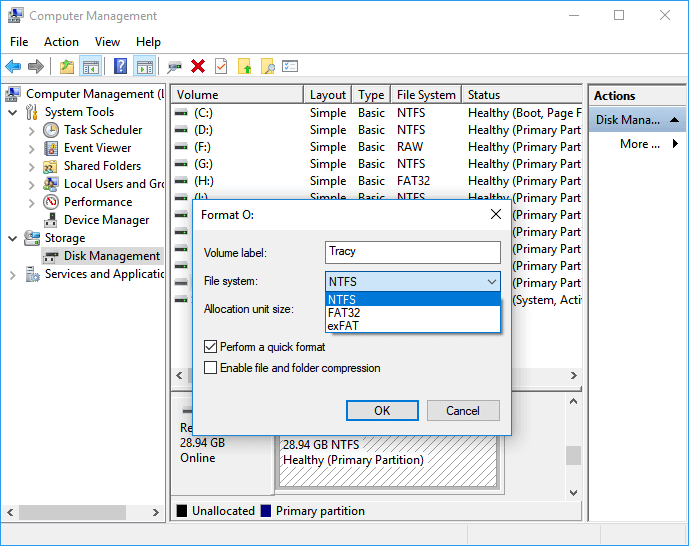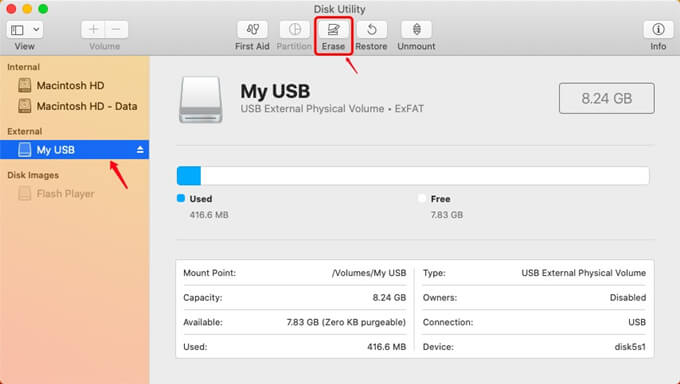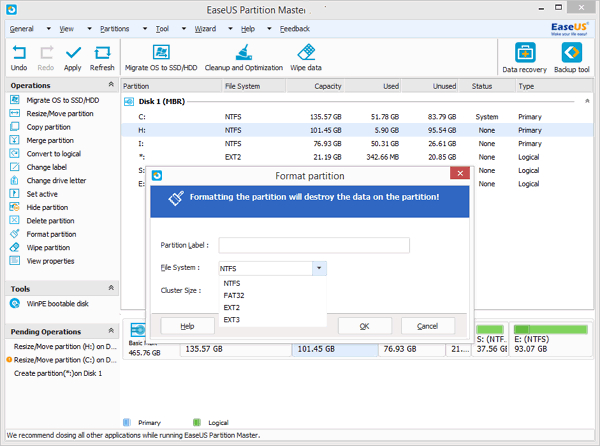SD Formatter is a program (application) that allows easy and quick access to SD, SDHC, and SCXC memory card formats, and has been framed to clear out all the files stored on your SD card at one time. Usually, formatting tools provided with Mac and Windows can format SD Cards, but it may not be optimized for SD/SDHC/SDXC Cards, resulting in. SD Memory Card Formatter for Mac Download Downloads; SD Association Whitepapers; Simplified Specifications. The SDA Software under this Agreement is “commercial computer software” as that term is described in 48 C.F.R. If acquired by or on behalf of a civilian agency, the U.S. Government acquires this commercial. SD Card Formatter is a software that provides quick and easy access to all SD, SDHC, and SCXC memory card formats. It's designed so you can get rid of everything saved on your SD memory card all in one go. It's advisable to use SD Card Formatter to get better performance out of your SD cards, since they can crash with everything being sent to. You can download SD Memory Card Formatter 5.0.1 for Mac from our software library for free. Our built-in antivirus scanned this Mac download and rated it as 100% safe. The most recent setup file that can be downloaded is 3.3 MB in size. The program lies within System Tools, more precisely Automation.
SD Memory Card Formatter 5.0.1 for SD/SDHC/SDXC
The SD Memory Card Formatter formats SD Memory Card, SDHC Memory Card and SDXC Memory Card (respectively SD/SDHC/SDXC Cards) complying with the SD File System Specification created by the SD Association (SDA).
It is strongly recommended to use the SD Memory Card Formatter to format SD/SDHC/SDXC Cards rather than using formatting tools provided with individual operating systems. In general, formatting tools provided with operating systems can format various storage media including SD/SDHC/SDXC Cards, but it may not be optimized for SD/SDHC/SDXC Cards and it may result in lower performance.
SD/SDHC/SDXC Cards have a “Protected Area” for SD Card security purposes. The SD Memory Card Formatter does not format the protected area in the SD/SDHC/SDXC Cards. The protected area shall be formatted by an appropriate PC application or SD host devices that provide SD security function.
The SD Memory Card Formatter doesn't support SD/SDHC/SDXC Card encrypted by the “BitLocker To Go' functionality of Windows. Please format the SD/SDHC/SDXC Card after it has been unlocked.

System Requirements
Operating Systems:
| SD/SDHC/SDXC | |
| Windows | Windows 7 (32/64-bit) Windows 8 (32/64-bit) Windows 8.1 (32/64-bit) Windows 10 Version 1511 (32/64-bit) Windows 10 Version 1607 (32/64-bit) Windows 10 Version 1703 (32/64-bit) Windows 10 Version 1709 (32/64-bit) Windows 10 Version 1803 (32/64-bit) Windows 10 Version 1809 (32/64-bit) Windows 10 Version 1903 (32/64-bit) Windows 10 Version 1909 (32/64-bit) Windows 10 Version 2004 (32/64-bit) |
| Mac | Mac OS X 10.7 Lion macOS 10.15 Catalina |
Important Notice:
Administrator Rights is required for Windows and Mac OS/macOS to execute SD Memory Card Formatter.
SD Interface Devices
The following interface devices can be used to access SD/SDHC/SDXC memory cards:
- SD Card slot on PC
- USB SD Card reader for USB2.0, USB3.0, USB3.1 & USB-C
Always confirm that the device is compatible with the SD, SDHC or SDXC memory card before formatting.
SD Memory Card Formatter Download for Windows/Mac
Developed by Tuxera
User's Manual of SD Memory Card Formatter for Windows/Mac
Copyright Notice
Microsoft and Windows are either registered trademarks or trademarks of Microsoft Corporation in the United States and/or other countries.
Apple, Mac, macOS are either trademarks or registered trademarks of Apple Inc. in the United States and/or other countries.
Oct 16, 2020 • Filed to: Solve Mac Problems • Proven solutions
Sound familiar to you? Well, there is no denying that if you want to extend the storage space of your devices than SD cards are of great help. But certain issues sometimes call for SD card formatting. Even if you have bought a new card, it is recommended to format it before using it. Read on to understand how to format memory card on Mac and recover the formatted data from it.
Part 1- Situations When Formatting Memory Card on Mac
Formatting an SD card on Mac is easy. All thanks to the in-built Disk Utility application. It leads to the deletion of all the saved content on the memory card, including the protected files, and more. Once Mac completes the formatting, new directories, and file systems are created and the performance of SD cards like its functioning and speed also improves with it.
Various reasons are there for which a user wants to format a memory card on mac:
- For quickly removing all information
- To reuse memory card
- Permanently deleting data before selling or disposing of it
- Format it to a new file system
- For solving errors, crash, virus issues, or other troublesome issues
After formatting, none of the files are left on the SD card. So it is recommended to take back up before initiating the formatting of memory card. This helps in restoring essential files to the SD card.
Part 2- How to Format Memory Card on Mac Safely
Some of the Mac systems have an in-built SD card slot; here you can directly insert an SD card to access it from Mac. If the SD card slot is missing in your Mac, then you can also use a USB card reader. For micro SD cards use SD adapter cartridge to put the card into the slot of Mac. Once you are ready with your SD card for formatting, follow these easy steps to format and make it reusable.
Step 1- Connect SD card with Mac
Insert the card into the SD card slot or connect it with a USB card reader.

Step 2- Open Disk Utility
Disk utility is in-built in Mac. Use the spotlight or follow the following path to reach 'Disk Utility' Applications > Utilities > Disk Utility
Step 3- Locate SD Card
Find your SD card from the left sidebar of Disk Utility. It shows the Mac's internal as well as external drives. You can see your SD card in the external section. If your card is never formatted before it shows up as 'Untitled' or 'No Name.'
While selecting the memory card, double-check it that you are choosing the right Drive from the list. Click on it to view the storage space and ensure that your inserted SD card's memory matches the one that is showing up. If you see some mismatch then probably you have selected the wrong drive. Carefully make the selection again in this case.
Step 4- Click on Erase Tab
Select the 'Erase' label located at the top in the menu bar of Disk Utility. When you click on it a pop-up will appear to warn you that you are going to delete all the files saved on your card.
Step 5- Write SD Card Name
Name the SD card as shown in the image below and select the format of the file system. The ExFat format is generally compatible with SD cards.
It's not mandatory to name the SD card here; you can leave it as 'No Name' or 'Untitled.' Naming it will only act as a convenience to you at a later stage when you view it in 'Finder' or while importing things.
The file system here is dependent on the size of the card. Like if its storage capacity is 64GB or more than that, select ExFat and if it's 32 GB or lesser than select FAT32.
Step 6- Click Erase
After naming and selecting the format of the SD card, click on the button displaying 'Erase.'
Step 7: Click Done When 'Erase' Completes
When the formatting completes a message saying the process is complete, display on the screen.
Once the format completes, the SD card is visible in the Disk Utility drive list and also in the Finder menu. Eject the SD card and use it in your device.
Video Tutorial on How to Format a USB Flash Drive on Mac
Part 3- How to Recover Formatted Memory Card on Mac
The formatting memory card will erase all data. But, don't worry as it is recoverable even after formatting. If you want to recover formatted data, use Recoverit Mac Data Recovery – the best data recovery software.
Step 1 - Select Location
Download Recoverit by confirming the computer version. Install it on Mac and launch it. Select the disk drive from where data is lost and click on 'Start' to begin the scan.
Step 2 - Scan Location
It starts on Mac with an all-around scan. You can preview files when the scan completes. While the scanning is in progress, you can make selections and filters. You can search lost files from file type or file path. If you find your lost data in between the scanning, you can even pause or stop the scan.
Step 3 - Recover files
Recoverit also provides the facility of previewing files before recovery step proceeds. Go through all the files that recovery software has found while scanning. Select the files for which you have run the scanning. Click on 'recover,' once you are done with the selection of the files that you were looking for.
You are done with the recovery of the files when the above step completes.
Here one thing needs to be discussed. When you are saving the files in your Mac after recovering, don't save them on the previous path. The selected drive should vary from the one from where you lost your vital data.
Follow the above steps carefully. With this, your system is up with all the data that you have lost during the formatting of the SD card.
Part 4- Tips for Formatting and Format Recovery on Mac
When you think of formatting the SD card on Mac, you need to recheck certain things to avoid any data loss.
- Think multiple times before formatting the SD card as everything that is saved on the card is ultimately going to delete. Always ensure to take back up of the SD card before formatting it. Backup assures that you can regain access to the important files that are getting deleted during the process of formatting.
- Ensure the SD card is in the 'unlock' state before you begin with the formatting or reformatting of the SD card. If the card is in the 'lock' state, Mac can't proceed with formatting.
- Keep your SD cards healthy to avoid formatting. To maintain them, start using the SD card after formatting it once and never let them completely filled. Prefer using only branded cards and don't turn off the device while it is writing data; this can damage the card.
- Go for reformatting the card over deleting the content from the card. If you go with reformatting, it keeps SD card in good working conditions for extended times. It is advisable to erase or format unwanted files by using Mac.
- Don't interrupt the process, when formatting is in progress. As interrupting it in between can compromise SD card. So proceed with the process carefully because if damage occurs, the repair is difficult.
- Use Recoverit to ensure you get back your formatted or lost data. The data recovery software with the highest recovery rate lets you recover files hassle-free with its easy steps.
Part 5- How to Fix Memory Card Format Errors
Sometimes when you connect SD card with Mac, it shows up certain error messages like - SD is not formatted or not accessible. During such conditions, if you continue with the formatting, you are going to lose your important data saved on the SD card.
Abrupt shut down while reading and writing on the card, removing cards wrongly from the device, using the card in more than one system are some of the possible reasons that lead to memory card format errors. Don't tamper the card when it shows such errors; it can lead to loss of data permanently. Fix the formatted errors with these solutions:
1. Check connection

Firstly you need to ensure that the SD card is properly inserted. Test it on a different USB port or with a card reader. If the problem persists, follow the below solution as the card is damaged.
2. Set SD Card To Be Visible On Desktop
The possibility is there that memory card shows up in 'Disk Utility' if it is not showing up in 'Finder.'
Step 1- Check 'External Disks' Option Is Enabled
Follow the path: Finder -> Preferences - > General
Check here whether 'External disks' is ticked. If not enable it so that the SD card can show up on the desktop.
Step 2- Check 'External Disks' Is Enabled In Locations
Click at the sidebar from the top and ensure it is checked under 'Locations' also.

3. Check Mount status in Disk Utility
If SD card doesn't show up even after setting preferences, then go with the following steps:
Step 1- Check whether SD card is listed in 'Disk Utility'
Step 2- Select the mount option, if the card is visible but is in the unmounted state.
Sd Memory Card Formatter For Mac Download Valid Software Windows 7
Now it is mounted in Finder and on desktop also.
4. Repair SD card with First Aid
Step 1- Go to 'Disk Utilities'
Read with this path: Applications -> Utilities -> Disk Utilities
Step 2- Click First-Aid
Select the unmountable card and click on First Aid. Wait until repair finishes.
Unfortunately, if the problem is still not fixed, reformat it and restore your files with Recoverit.
Closing Words
Sd Memory Card Formatter For Mac Download Valid Software Windows 10
Memory Card is the best medium for extending the storage space of your device. But these cards are prone to damages. A virus, improper handling, abrupt removal, and various other factors can corrupt it. To fix the issue, formatting is the best solution. If you also come across such a situation, follow the complete procedure step by step for formatting the memory card as discussed in the article. You can also recover your lost and formatted data with Recoverit.
What's Wrong with Mac

- Recover Your Mac
- Fix Your Mac
- Delete Your Mac
- Learn Mac Hacks
